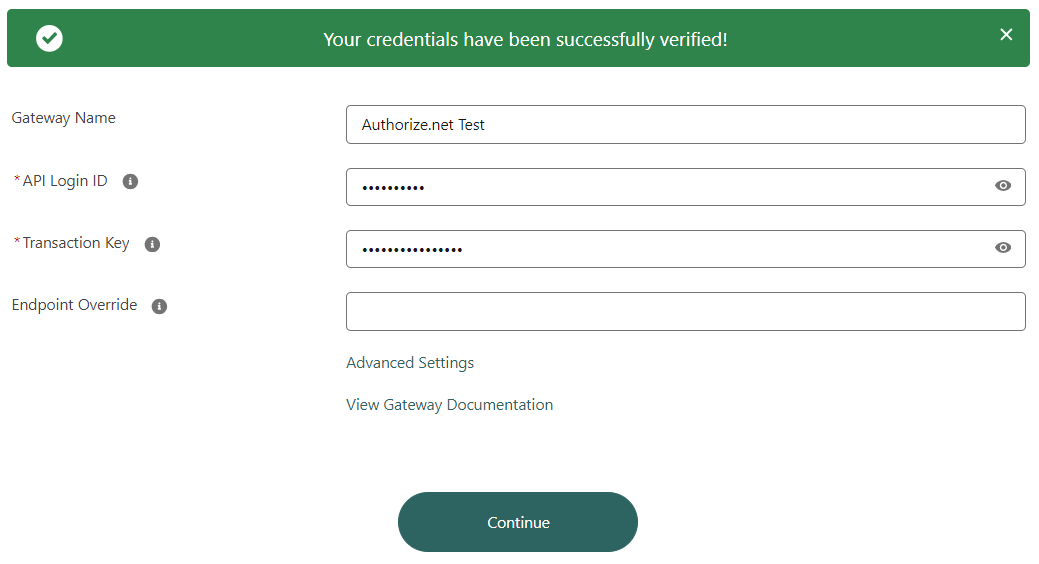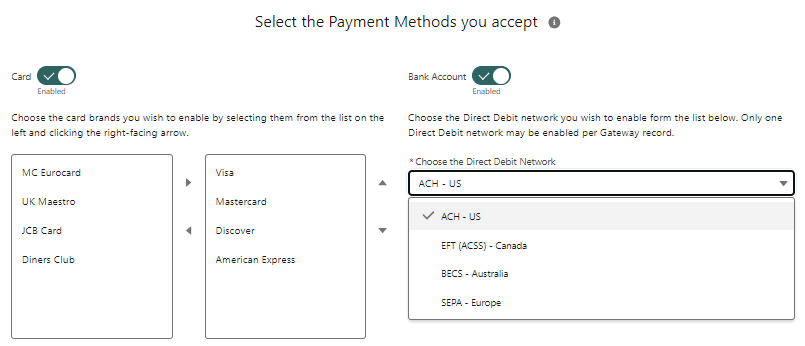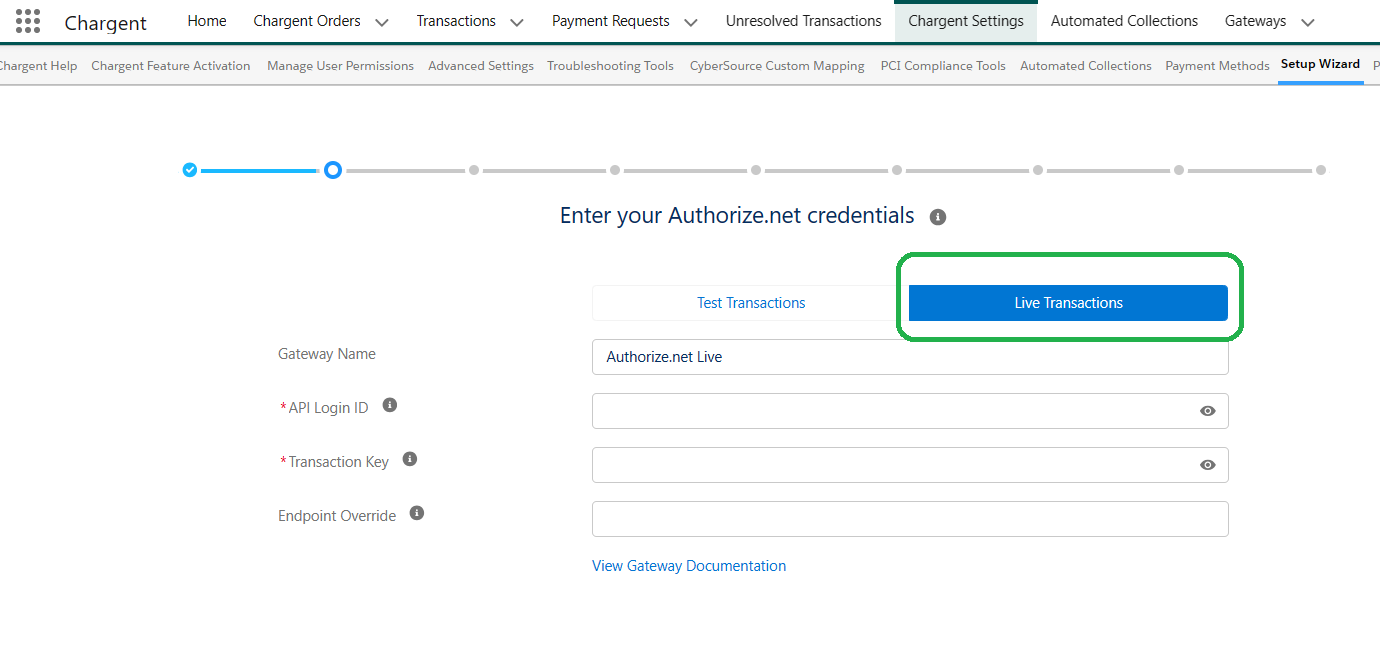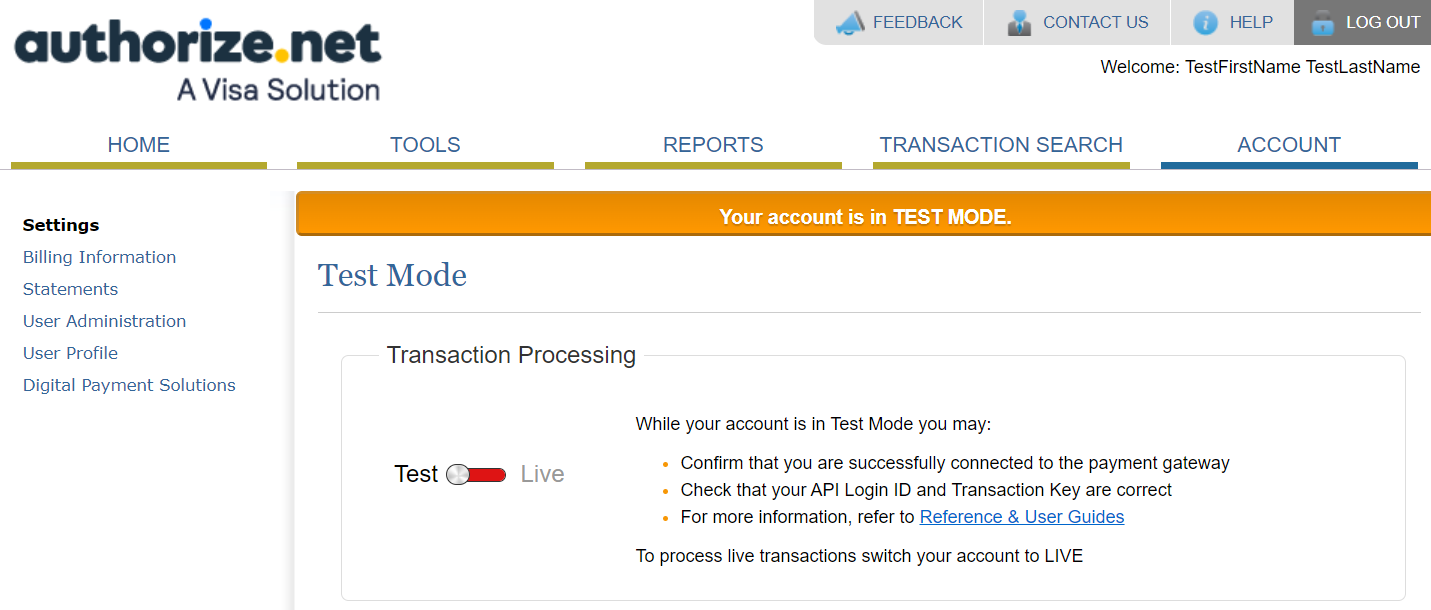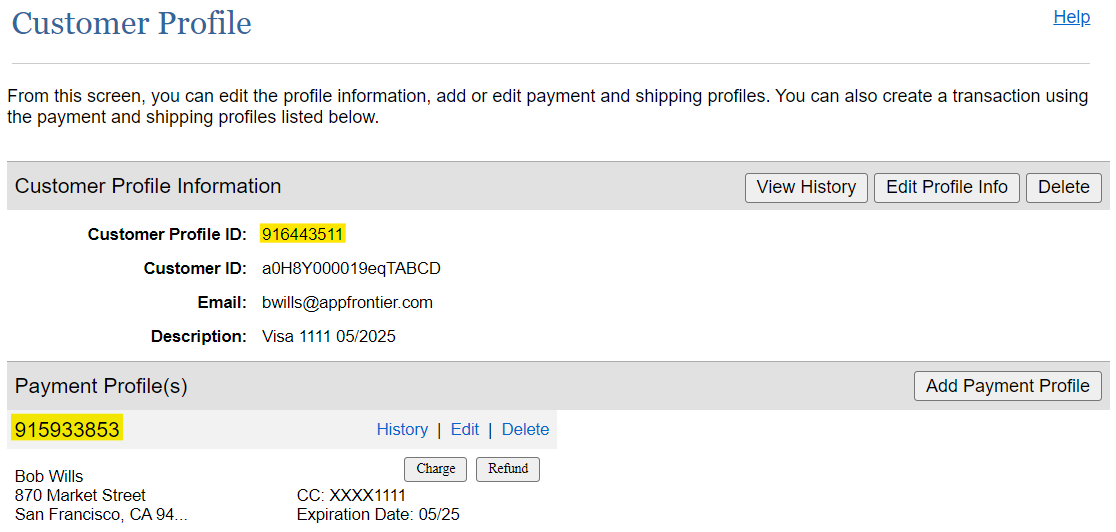Integrating Authorize.net With Chargent In Salesforce
Salesforce Payments by Chargent is the leading payments application available on the Salesforce AppExchange. Chargent allows you to charge credit cards and Bank Account transactions directly from within Salesforce. This guide shows you how you can easily connect the Authorize.net gateway with Salesforce using Chargent.
About This Guide
This guide walks you through the steps needed to integrate Chargent with Authorize.net (aka Auth.net). It assumes you have already installed and configured Chargent, but links are provided to installation, user management, and configuration topics where more detail is available to get you up and running quickly. It also assumes you have already chosen a gateway and includes links to gateway documentation for instructions on configuring it.
Before You Begin
Before you start integrating Authorize.net in Chargent with Salesforce, make sure you’ve completed the following steps.
Installing and Configuring Chargent
Before setting up your gateway, install the latest version of Chargent and configure your user permissions. Guides for these topics are available below to help you get started.
- Installing and Updating Chargent
- License Assignment (Production Only, not required for Sandbox)
- Permission Assignment
Checking Your Remote Site Settings
While the Remote Sites for your gateway should automatically activate when installing Chargent, we recommend checking them to make sure they have correctly activated in your org.
- Click the gear icon
at the top right and choose Setup.
- Enter “remote” in the Quick Find box and choose Remote Site Settings.
- Locate the following Remote Site names and make sure the “Active” box is selected:
-
- AuthNetAPI2
- AuthNetCIMAPI
- AuthNetTestAPI
- AuthNetTestCIMAPI
- If the “Active” box is not selected, click Edit, select Active, and click Save.
Testing in Your Salesforce Sandbox
Before installing Chargent in production, we highly recommend installing and testing in a Salesforce sandbox. The following topics provide instructions for obtaining your test gateway credentials and creating a test Gateway record in Salesforce. Remember to refresh your sandbox beforehand to ensure that your sandbox is aligned with your production configurations.
Creating Your Authorize.net Sandbox Account
If you don’t already have Authorize.net credentials for testing, set up a sandbox account.
Using Your Authorize.net Sandbox Account
After you create your account, you’ll receive an email providing your Authorize.net sandbox login credentials. The default answer to the secret question from your Authorize.net sandbox account, “What is your Pet Name?” is “Simon.”
Always use your Authorize.net sandbox in “Live Mode” because it does not connect to the card networks. The purpose of an Authorize.net sandbox is for you to safely use it in “Live Mode” without fear of creating actual transactions. For more information, see What Is test mode and how do I turn It off and on?
Obtaining Your Authorize.net Sandbox Credentials
To verify your test gateway credentials in Salesforce, Chargent requires your Authorize.net sandbox API Login ID and Transaction Key. You can access your credentials by following these steps:
- Log in to your Authorize.net sandbox account.
- Click the Account tab.
- Click API Credentials & Keys.
- Your API Login ID will be displayed on the page.
- Your Transaction Key will need to be generated by selecting the New Transaction Key radio button and clicking Submit. Your Transaction Key will only be displayed once, so ensure you save it now. If you lose this key, you will need to generate a new one and update your gateway credentials in Salesforce.
Creating Your Test Gateway in Chargent
Now that you have your credentials in hand, it’s time to create a gateway record in a Salesforce sandbox and verify your Authorize.net sandbox credentials.
- Login to your Salesforce sandbox (partial, full, or developer sandboxes work).
- Go to the App Launcher
and click the Chargent app.
- Click the Chargent Settings tab and choose the Setup Wizard subtab.
- Click Yes when prompted, “Do you have a Payment Gateway account?”.
- Select ‘Authorize.net’ from the list and click Continue.
If your testing process requires creating live transactions in your sandbox environment, see Authorize.net: Testing Live Transactions in a Salesforce Sandbox.
- Select the Test Transactions tab.
- Enter your Authorize.net sandbox credentials, leaving the Endpoint Override field blank.
- Click Sign In.
When you receive a message stating “Your credentials have been successfully verified!”, click Continue to complete the steps in the wizard. If you receive an error message in red, see our troubleshooting tips.
For more detailed information about these steps, see our documentation for the Gateway Setup Wizard.
Setting Up Your Direct Debit Network (Optional)
Setting up your Direct Debit Network is optional but recommended. When you reach the Gateway Setup Wizard page labeled “Select the Payment Methods you accept,” select the Direct Debit Network for your region.
Authorize.net supports ACH – US or EFT (ACSS) – Canada Direct Debit Networks. Choosing the correct Direct Debit Network will allow you to accept Bank Account payments and display the correct Direct Debit Network fields in Chargent.
Running Test Transactions
After successfully creating your test Gateway record, you can attempt your first test transaction. See Testing in Sandbox for instructions and best practices for testing.
You can use the following test credit card number to verify that your integration is working correctly:
| Card Number | Expiration | CVC |
|---|---|---|
| 4111 1111 1111 1111 | Any date in the future | Any 3-digit number |
We also recommend testing additional payment methods and response codes. Use Authorize.net’s test credit cards, account numbers, and response codes to ensure that your gateway is integrated properly before going live.
Going Live in Production
Once you’ve tested your gateway integration in a Salesforce Sandbox, you’re ready to move to production! See Moving from Sandbox to Production to learn how to migrate your Chargent configuration changes to your production Salesforce environment. After moving Chargent to production, see Testing in Production for best practices prior to going live.
Creating Your Authorize.net Live Account
In Authorize.net, live and test credentials are different. To process live transactions in Salesforce, you will need to register for a live Authorize.net account.
Creating Your Live Gateway Integration in Salesforce
So far, you’ve been using your test Authorize.net credentials and created a test gateway using the Test Transactions tab. Now, it’s time to click the Live Transactions tab and enter your live Authorize.net account credentials:
- Log in to your production Salesforce org.
- Go to the App Launcher
and click the Chargent app.
- Click the Chargent Settings tab and choose the Setup Wizard subtab.
- Click Yes when prompted, “Do you have a Payment Gateway account?”.
- Select ‘Authorize.net’ from the list and click Continue.
- Click Live Transactions and enter your new live gateway credentials to process live transactions, and click Sign In.
- When you receive a message stating “Your credentials have been successfully verified!”, click Continue to complete the steps in the wizard. If you receive an error message in red, see our troubleshooting tips.
For more detailed information about these steps, see our documentation for the Gateway Setup Wizard.
Testing with Live Credentials in “Test Mode”
Next, you can use your live Authorize.net credentials rather than the test credentials but set Authorize.net to “Test” mode so the transactions sent will not be processed as real transactions. For more information, see What Is test mode and how do I turn It off and on?
- Log in to your Authorize.net live account.
- Click Account and choose Settings to find the Test Mode link in the Security Settings area.
- Move the slider to Test.
- Run several test transactions using your live credentials in test mode.
When processing test transactions in Test Mode, Authorize.net returns a transaction ID of “0”. This means you cannot test follow-on transactions, such as credits or voids, while in Test Mode because the original transactions will not have the required Transaction IDs stored in the Gateway ID field in Chargent.
To test follow-on transactions, you can process a test transaction with any valid credit card number in live mode.
Running Live Transactions
After tests in the live environment are successful, you are ready for the final phase of testing: running live transactions.
- Ensure Test mode is turned off by moving the slider back to Live in your Authorize.net live account.
- You can now run live transactions using valid credit card numbers.
If you wish to test some live transactions, you can void them immediately after to prevent the transactions from settling. To do this, go to the transaction record in Salesforce and click Void.
If you do run live transactions as a test, we recommend making very low amounts to minimize any impact in the event you forget to void them.
To test gateway responses in the live environment, submit live transactions with the correct street address, zip code, and card code information to generate successful responses. Likewise, submit incorrect street address, zip code, and card code information to generate other responses. You can void successful transactions immediately to prevent live test transactions from being processed.
Congratulations! You have successfully integrated Salesforce and Authorize.net via the Chargent for Salesforce app. You can now process one-time or recurring credit card payments directly from Salesforce through Authorize.net.
Supported Features
Chargent’s integration with Authorize.net includes the following features.
ACH Validation
Authorize.net includes an option for ACH Validation. ACH Validation is not currently supported for new Chargent integrations, but exciting changes are on the horizon. For more information, see ACH Validation.
Address Verification System (AVS)
Chargent’s integration with Authorize.net includes Address Verification System (AVS), a technology used to prevent fraud by validating the ownership of a credit card using the billing address of a credit card and matching it with the data on file at the credit card issuing company. Click here for more information.
Currencies
Chargent’s integration Authorize.net supports multiple currencies. See Processor Support for a list of currencies supported by Authorize.net.
Duplicate Window Setting
Authorize.net duplicate window setting allows you to set a time frame, in seconds, for the gateway to search for duplicate transactions. To set this parameter, add the Duplicate Transaction Window field to your gateway page layout and enter the time frame in seconds in that field. Possible values are:
- Empty. If the field does not contain a value, it is not set. The parameter isn’t sent, and Authorize.net will use the default setting of 120 seconds.
- 0. A value of zero disables the duplicate check.
- 1 – 28800 – time frame in seconds. 28800 seconds (8 hours) is the maximum time frame value. If a greater value is set, Authorize.net will fall back to 28800. 1800 is 30 minutes.
Payment Methods
Authorize.net Supports the following payment methods:
- Credit Card
- ACH (Automated Clearing House)
- EFT (Electronic Funds Transfer)
For more information about the difference between Credit Cards and ACH payments, visit ACH Payments versus Credit Cards.
Tokenization
Chargent supports Authorize.net’s Customer Information Management (CIM) feature for tokenization. Tokenization helps you decrease PCI compliance scope and improve security by storing transaction data such as credit card numbers and bank account numbers on Authorize.net’s servers and not in Salesforce.
The token returned by Authorize.net is stored in the Token field on the Chargent Order and the Tokenization field on the Transaction record in Salesforce. To learn more about why we recommend tokenization, visit Salesforce Tokenization.
Transaction Sync
Chargent sends charges and authorizations to the payment gateways, recording the result in a real-time transaction in Salesforce. Chargent also updates Salesforce records long after the initial transaction if, for example, ACH transactions are returned for non-sufficient funds (NSF) or credit card authorizations that expire. We recommend setting up transaction synchronization for your organization.
Review the Authorize.net documentation for details on the various transaction status values for Authorize.net transactions. Authorize.net also retrieves transaction settlement time. It is stored in the Settlement Time field of the transaction.
Transaction Types
Chargent’s integration with Authorize.net supports multiple transaction types.
Field Mapping
Salesforce sends payment information to your gateway based on the field values in your Chargent Order records. The gateway stores the payment information as a transaction. Then the gateway sends a response to Salesforce, storing it in a Transaction record. Here are a few important examples of how the data is mapped between Salesforce and Authorize.net.
| Chargent Field | Salesforce Object | Direction | Authorize.net Field |
|---|---|---|---|
| Gateway ID | Transaction | > | Transaction ID |
| Token* | Chargent Order | < | Customer Profile ID-Payment Profile |
| Invoice Number | Chargent Order | > | Invoice Number |
| Order Information | Chargent Order | > | Description |
| Billing First Name / Billing Last Name | Chargent Order | > | Name |
| Billing Company | Chargent Order | > | Company |
| Billing Address / Billing Address 2 | Chargent Order | > | Address |
| Billing State / Province | Chargent Order | > | State / Province |
| Billing Zip Code / Postal Code | Chargent Order | > | Zip Code |
| Billing Country | Chargent Order | > | Country |
| Billing Phone Number | Chargent Order | > | Phone |
| Billing Fax Number | Chargent Order | > | Fax |
| Billing Email Address | Chargent Order | > | |
| Tax | Chargent Order | > | Tax |
| Shipping | Chargent Order | > | Freight |
*The Token field on the Chargent Order combines the Customer Profile ID and the Payment Profile, separated with a dash. For example, a Token equaling 916443511-915933853 can be derived from the following Customer Profile in Authorize.net.
If you want to learn more about using Authorize.net’s fields programmatically, see Authorize.net’s developer website.
Gateway Responses
The Reason Code field on a Transaction record stores a response code provided by Authorize.net. To learn more about a specific response code, see Authorize.net’s Transaction Response Codes.
We also recommend viewing the Gateway Response field for additional information about a gateway’s response.
Troubleshooting
If you are having trouble connecting to your gateway, we recommend starting with these troubleshooting steps.
For additional troubleshooting tips or frequently asked questions about Authorize.net, check out Chargent’s knowledge base articles.
Getting Help
Contacting Authorize.net Support
Authorize.net has many support channels. Visit How do I contact Authorize.net? to choose the one that best suits your needs. You can also contact them by phone at 1-888-323-4289.
Contacting Chargent Support
Contact our support team if you encounter any Chargent issues with your implementation.





